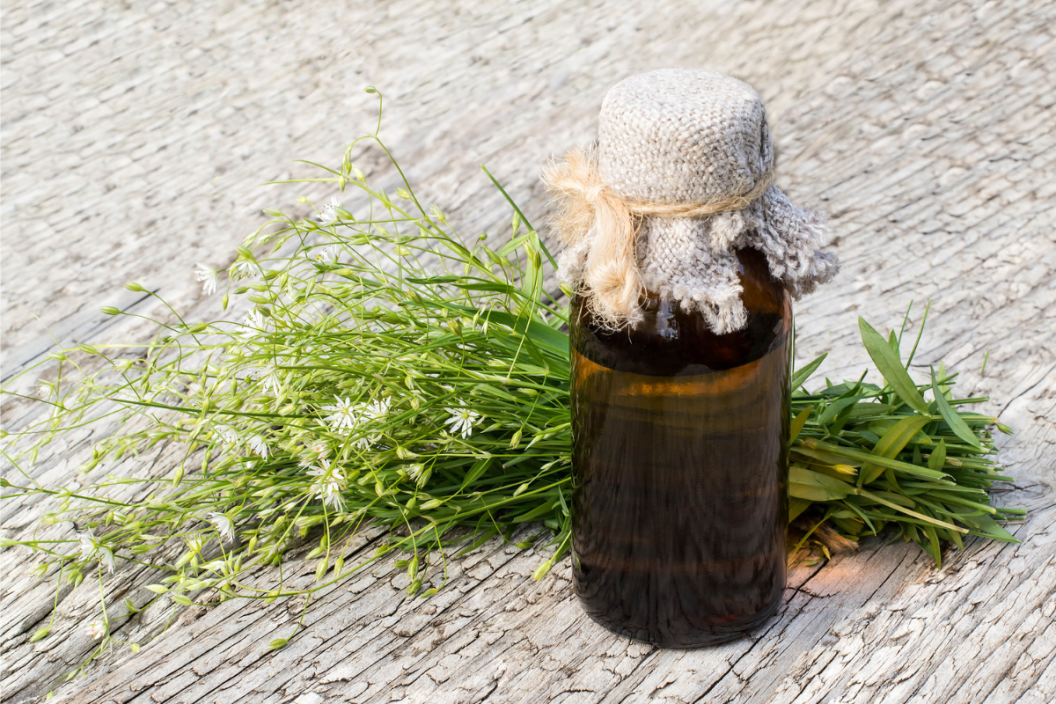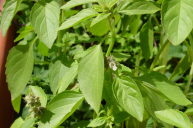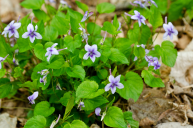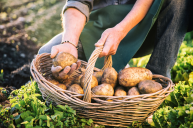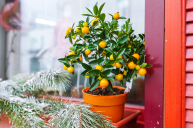Every gardener knows how frustrating it is to watch a lovely yard or garden become overtaken with weeds. Weeds can become the bane of a gardener's existence, sabotaging the veggies and flowers that you spent so many hours cultivating. One of those weeds is chickweed, a weed distinguished by its white star-like flowers and healing properties.
As annoying as chickweed can be when it's taking over your garden bed, it has many uses, from being a tasty cooking ingredient to a medicinal herb. When used medicinally, chickweed can treat many skin ailments, from acne to rashes to general itchiness. This ubiquitous weed is scientifically named Stellaria media, which means "star" and "in the midst of," a name that comes from the plant's little white flowers.
Chickweed grows throughout the country and thrives throughout much of the year, depending on where you live. It loves cool, damp conditions with temperatures between 35 and 75 degrees F, so although it'll die in the midst of summer in many areas of the country, chickweed will return in full force come the fall. This versatile weed can be found in lawns and wooded areas. To make the most of this pervasive weed, it's essential to learn how to harvest it and what to do with this ever-growing weed.
How to Identify Chickweed
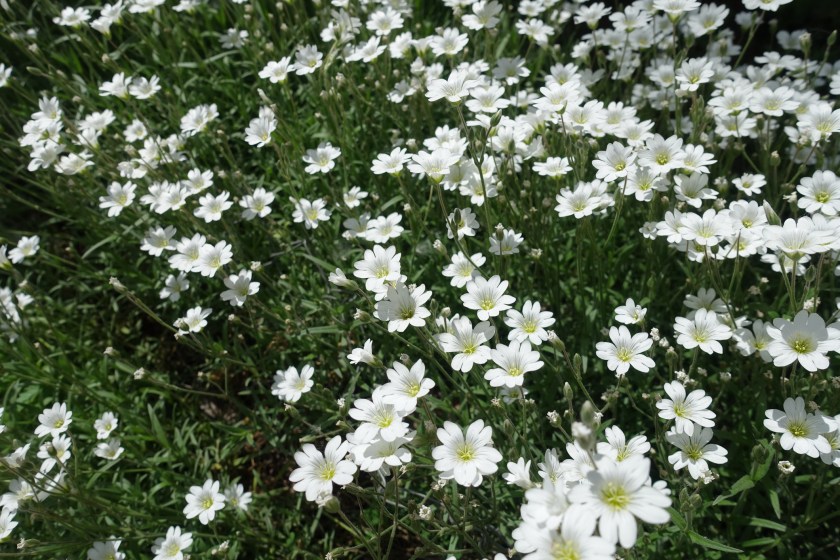
Getty Images/apugach
The first step to harvesting this natural skin treatment is knowing what it looks like. Katie Krejci, MS, RD, LD, IFNCP of Homesteading RD loves chickweed and considers it one of her favorite things to forage for.
To identify it, she says, "Chickweed is one of the easiest wild plants to identify due to its bright, star-like flowers and delicate, light green stems. They are often found growing on the edge of wooded areas. Thankfully, there is only 1 dangerous look-alike to chickweed to be mindful of and that is Scarlet Pimpernel, which has orange flowers."
These bright flowers have five white petals that have clefts in them, making the plant appear to have ten petals. Each stem has a single line of hairs running along the length of the stem, a rare trait that allows even a novice forager to distinguish this plant.
Along with this, look for small, teardrop shaped leaves with a pointed tip. Chickweed grows up to a few inches off the ground, so you'll need to search low to the ground while searching for it.
How to Harvest Chickweed
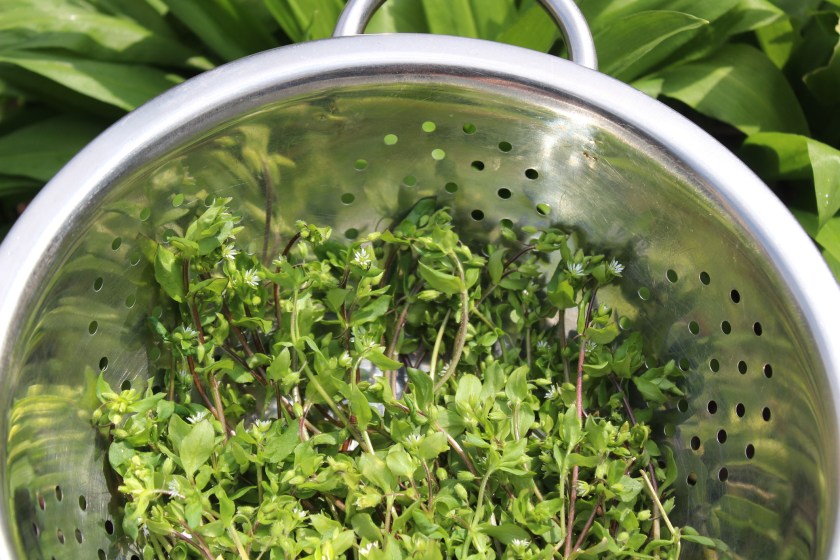
Getty Images/Martina Unbehauen
Once you've identified the weed, the next step is knowing how to harvest it. As explained by Krejci, "Chickweed is best harvested in the cool morning and used as soon as possible because it wilts fairly quickly. Using scissors, cut off the greens with clean scissors (leaving a few inches of growth behind to regrow). If wilted, submerge in cool water for 5-10 minutes and it'll perk back up!"
Make sure you only harvest from places where you're positive that the soil isn't contaminated with pesticides and herbicides like wild-growing wooded areas or your own yard. Once you've foraged the chickweed you need, rinse off the dirt and place in a plastic bag or damp paper towel, where it will last in the refrigerator for several days.
How to Use Chickweed for Food and Medicine
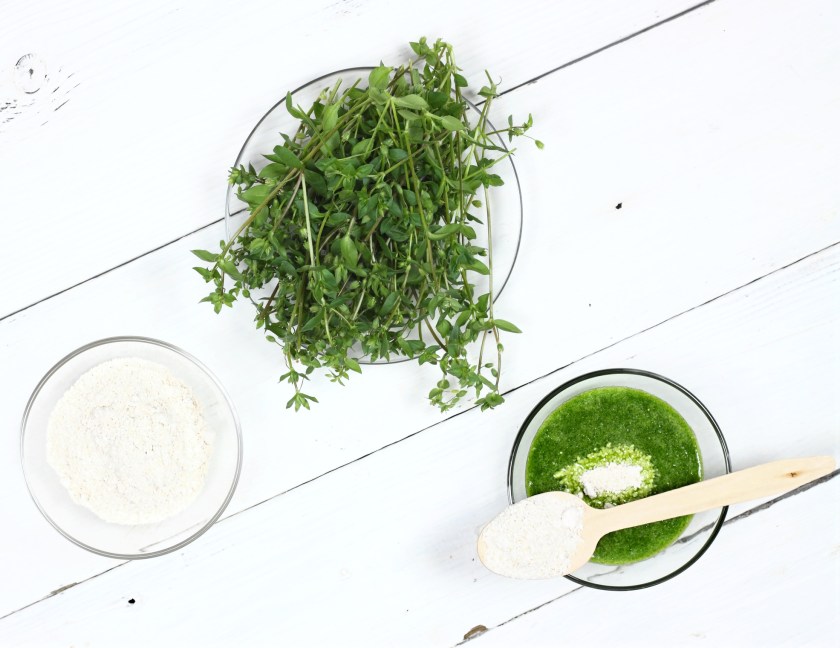
Getty Images/svehlik
Now that you've harvested your chickweed, it's time to put this weed to use. Katie Krejci advises, "Chickweed has a pleasant, sweet taste and is lovely mixed into a salad. However, my favorite way to use it is as a topical agent. Chickweed is incredibly soothing to the skin if you have any irritations, bug bites, you name it! Chickweed can be infused into an oil to create a salve, or it can be used directly on the skin. When I get a bug bite or a rash from nettles while in the garden, I simply find some chickweed, chew it up and stick the poultice on my irritated skin. The itch stops immediately!"
Using it to create an oil or salve is a great way to reap the medicinal benefits of this fruitful weed, whether you're treating wounds, healing infection or soothing a rash.
To make it into oil, harvest chickweed, let it dry for about a day, chop it finely, and place it in a double boiler. Cover the pot with olive oil and heat it on very low heat, turning the heat on and off periodically for about two days and making sure that it never boils. Take the mixture off the heat and strain it with a muslin cloth, pouring the oil into a glass jar. Store it in a cool dark place and use it to treat skin inflammation, wounds, boils, rashes, acne, and dry skin.
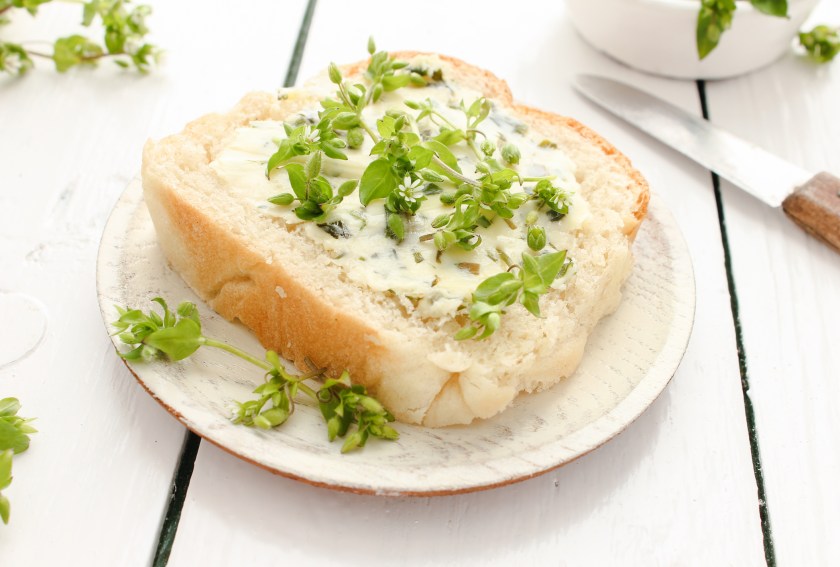
Getty Images/EflStudioArt
Chickweed has a pleasant, fresh, mild flavor and is delicious to eat as well. Not to mention, it's packed full of nutrients like vitamin A, vitamin C, iron, calcium, magnesium and more, making it ideal for boosting the immune system or reducing inflammation.
To eat chickweed, add it raw to salads, sandwiches, sauces, smoothies and soups. This versatile weed adds a touch of flavor and a nutritional boost to any dish. However, it's best to eat raw rather than sauteing or boiling it. You can also make chickweed tea by steeping 2-3 tablespoons of raw chickweed in a cup of boiling water for 5-10 minutes, then straining out the chickweed.
